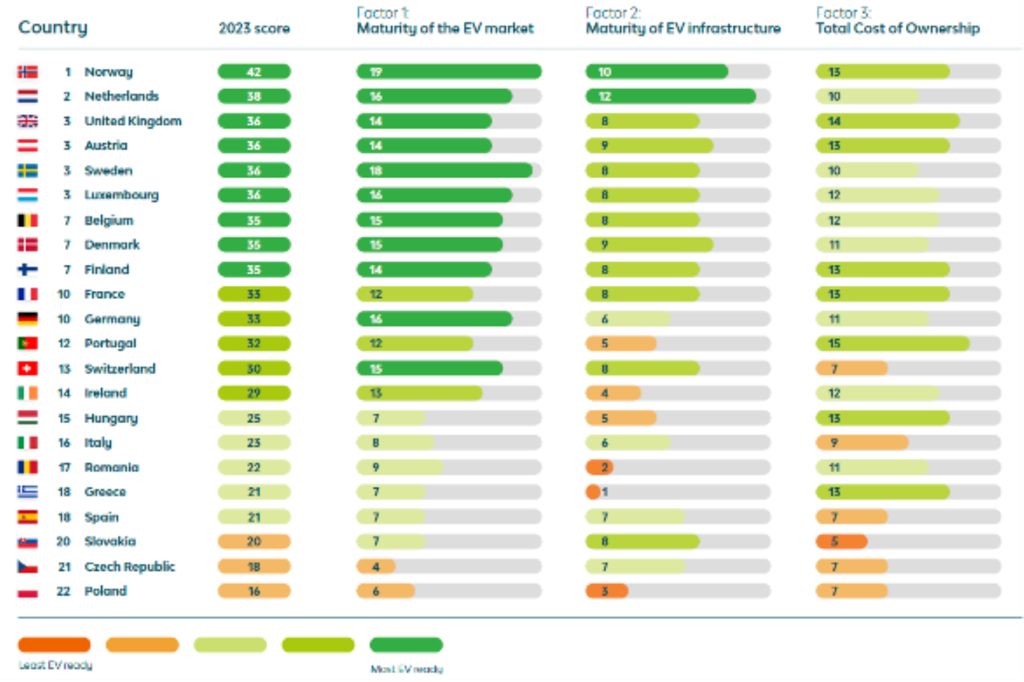Are We Starting To See Discounts Being Offered That Will Bring Down The Cost Of EV’s & Improve Lease Rates?
Thursday, 1. June 2023
Tesla price cuts, the arrival of new manufacturers from China and an increase in production are resulting in fleets starting to see discounts on new electric vehicle (EV) orders.
That’s according to Mike Potter, CEO of Drive Electric, who told delegates at the Association of Fleet Professionals (AFP)’s 2023 Conference, it was a sign that EVs are becoming a “normal part of the fleet market” as well as the sector seeing a return to something a little closer to “traditional market conditions”.
“We’re not talking about massive discounts but the time when all EVs were sold at list price appears to have passed, at least for the time being,” he said.
“The moves made by Tesla appeared to us to be designed to try to prompt some kind of price realignment in the EV market and, to some extent, that has worked – although it has arguably had negative effects in terms of setting future residual values.
“Certainly, others have had to look at their own sales to fleets and whether incentives needed to be introduced.”
He added: “New entrants from China have also been a factor.
“MG is now really established as a standard fleet choice at the entry level EV end of the market and the arrival of others such as BYD could have a similar impact in the mid-market.
“Their product appears to be strong enough to challenge existing players and if availability is good, they could mount a serious challenge.”
EV lead times ‘shortening’
Some fleet managers in the audience reported that lead times on EVs were starting to fall, sometimes substantially – although this could create its own problems.
Peter Milchard, AFP board member, said: “It was interesting during our panel discussion to hear that some fleets, who are sensibly placing EV orders 12-18 months ahead of when they actually need the vehicles based on recent supply experiences, are now seeing some of those orders arriving in 6-9 months.
“On one hand, it’s good news, because it suggests that lead times are returning to sensible levels in some instances, but it does mean that their orders are arriving a year earlier than they really need them, which can obviously be an issue in itself.”
Solus versus panel funding
The conference also debated the advantages of solus versus panel funding for fleets.
Steve Winter, of Appleridge Fleet Consultancy, said: “You can easily find differences of between £30-£100 per month on the same vehicle depending on the leasing company.
“These are not normally a sign of anything other than the appetite of that business for leasing you a certain kind of model of vehicle but does show the importance of benchmarking when it comes to vehicle acquisition.
“Fleets should consider having a panel of lenders is the right solution.”
The AFP conference took place at The British Motor Museum, Gaydon, and focus
ed on practical advice for fleets facing a range of current issues.
Sessions took the form of panel discussions with leading fleet managers chaired by AFP board members. These covered topics including handling supply matters, dealing with the rising costs of leasing and rental, managing an aged fleet, reimbursing drivers of electric vehicles, and optimising van fleets while gearing up for electrification.
AFP chair Paul Hollick said: “The ongoing impact of everything from the pandemic to the current economic crisis means fleet managers are facing a multitude of difficult issues for which there are often no easy answers such as rising costs across the board, ongoing supply difficulties, electrification of van operations and the ageing of their existing fleets.
“We wanted delegates to leave with ideas they can put straight into action – and the feedback that we are receiving suggests that the conference very much achieved that aim.” By Graham Hill thanks to Fleet News























